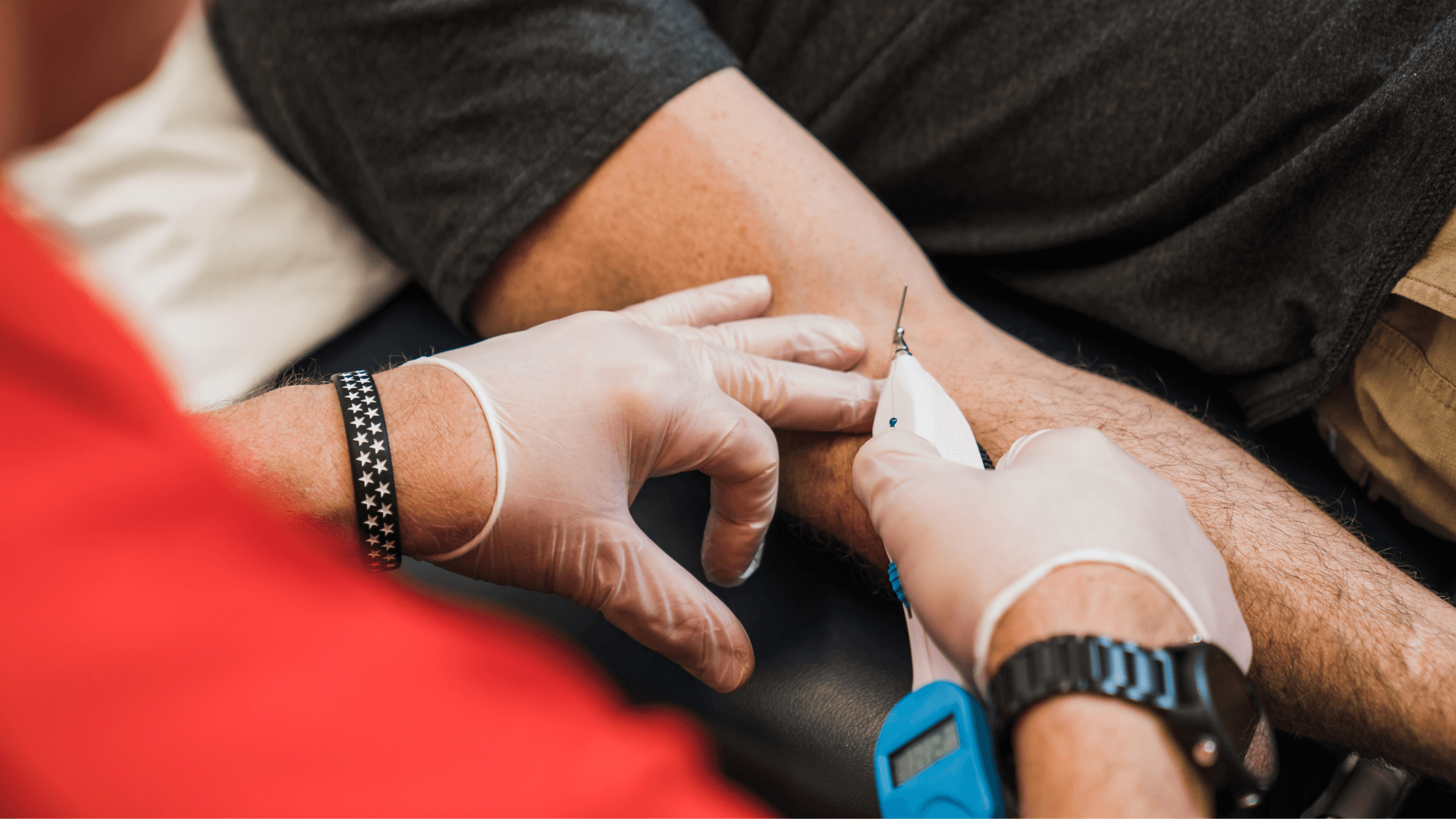Dry Needling With Electrical Stimulation: Is It Right For You?

Licensed Physical Therapist, PT, DPT // Dry Needling Certified // Titleist Performance Institute Certified // Director of Player Development, EW Golf // EW Motion Therapy Homewood // EW Motion Therapy Trussville
Dry needling may seem like an intimidating procedure if you have a fear of needles. If you finally gain the courage to go to a needling session, and you are then presented with the option of adding electrical stimulation, that may increase your fear even more. Your mind may flash to the image of a black and white Frankenstein being struck by lightning. You may wonder if it hurts more and whether the electrical stimulation would benefit you. Even though your practitioner will go over everything with you before you get started, it may be difficult to dismiss all of your nerves.
If the thought of electrical stimulation (also called e-stim) does make you nervous, you are not alone. But rest assured - you do not have to include it in your needling session if you do not want to. However, electrical stimulation can provide many benefits and even enhance the effects of dry needling, so it may be worth a try. Many of our physical therapists at EW Motion Therapy are dry needling-certified and trained on how to use electrical stimulation so you can get more bang for your buck from your needling session. Even if you choose not to get needled with us, we still want to educate on electrical stimulation and help you understand the benefits it can bring.
This article discusses how electrical stimulation works with dry needling, the benefits of the stimulation, and some situations in which you should avoid electrical stimulation. With this information, you can feel more confident going into your next dry needling session.
How does electrical stimulation work?
When your practitioner inserts a dry needle into a certain area, they will connect a device to the needle that generates a small electrical current. This application of current is used to elicit a “twitch response” in the muscle that is simply a small muscle contraction. This application can be applied to a single needle in a muscle or to multiple needles across one or more muscles.
Electrical stimulation is also used to retrain dysfunctional muscles. Many dysfunctional muscles get caught in a pain-spasm cycle. When the muscle is injured or sore, it releases biochemicals that increase your perception of the pain. Then, to protect itself, the muscle will spasm, and with the new release of biochemicals, the cycle begins again. Dry needling can target a specific muscle caught in this cycle, and with the electrical stimulation, the procedure can train the muscle to fire properly.
Benefits of electrical stimulation
In addition to improving muscle function, dry needling with electrical stimulation can reduce pain and decrease muscle tone when it is in spasm. Our body releases biochemicals that increase the perception of pain in our brain in response to injury, or even potential injury. Dry needling can reduce the release of these biochemicals, thus reducing the perception of pain. The additional application of electrical stimulation further increases your pain threshold.
Dry needling, overall, can increase local blood flow to an area and may increase range of motion at a joint by improving tissue flexibility. This may aid in the healing process and help with symptom management during injury. Some people find dry needling more comfortable with electrical stimulation, and the stimulation can help the positive effects of the procedure last longer.
When should I not use electrical stimulation?
Even though electrical stimulation can be helpful in many ways, there are some circumstances in which you should not add it to your dry needling session. If you have some sort of electrical device implanted in your body, like a pacemaker, or use an electrical stimulator for pain relief, electrical stimulation is not recommended. Also, if you have a tumor or an active infection, electrical stimulation might be a precaution.
If you have a lot of anxiety surrounding using electrical stimulation, be open and honest with your practitioner, and they can help you find the best solution.
How else can dry needling help me?
Now you know more about how dry needling works when combined with electrical stimulation. Even without the electrical stimulation, dry needling can be an excellent solution for muscle tension and areas that need expert attention. Read this article to learn more about the benefits of dry needling.
Even though electrical stimulation can sound a little like Frankenstein, it is anything but, and can be incredibly beneficial when paired with your dry needling treatment. Our dry needling-certified therapists at EW Motion Therapy will walk you through every step of your treatment and make sure you are fully comfortable along the way. If you are interested in dry needling with us, fill out the Request an Appointment form on our website, and someone from our staff will contact you within 48 hours with your next steps.


